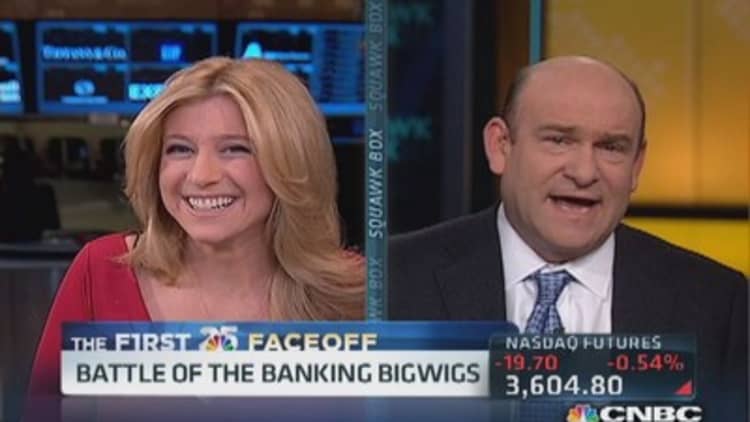
As part of its 25th anniversary, CNBC is creating a definitive list of people who have had the greatest influence in business over the past quarter century. Determining who belongs on this list—and who should rank higher—has led to some spirited debates. Today, we pit Ben Bernanke against Mario Draghi. After reading, cast your vote.
Ben Bernanke
Many will debate for a long time whether the actions former Federal Reserve Bank Chairman Ben Bernanke took during the financial crisis were right or wrong. But few will argue the profound, global and long-lasting effects of what he did.
With markets in free fall amid the biggest financial crisis since the Great Depression, Bernanke created massive backstops for the financial system that never existed. In the face of sharply declining growth and spiking unemployment, Bernanke brought interest rates down to zero from 5.25 percent in less than 18 months, taking the lead among global central bankers with decisive policy action.
When the Fed's main interest rate hit zero, Bernanke innovated again, buying government bonds and mortgages to further drive down interest rates. When the economy still didn't generate enough growth,he bought trillions of more bonds and used a new tool, forward guidance, in which he pledged to keep rates low for years.
His supporters say he acted boldly and creatively to avert financial disaster and that he helped rescue Main Street. Critics say he bailed out Wall Street and created a long-lasting inflation threat, even though that has yet to be borne out over six years.—Steve Liesman
Mario Draghi
It took three magic words. "Whatever it takes." When the European Central Bank President Mario Draghi sternly said those words during the summer of 2012 when the euro was cratering, he was daring financial markets to challenge the ECB's commitment to keeping the single currency together. It worked—the euro bottomed, the continent turned a corner. That is the power of Mario Draghi. Besides using his words, Draghi used his toolbox to launch a series of programs and policies to ease the acute pain during the depths of crisis. He cut interest rates. He reinstated LTRO's, long term refinancing operations, for banks to remove funding risks and add liquidity to the banking system. He further innovated with the announcement of OMT, outright monetary transactions—where countries could ask the ECB to buy unlimited sovereign bonds to calm the market on the condition that countries adopt strict fiscal rules. The idea that it was unlimited and came with strict strings attached went a long way to shoring up confidence.
But taming financial markets and preventing a systemic calamity stemming from a breakup of the euro was not Draghi's only major accomplishment. He also proved to be the great neutralizer during intense political battles between 17 different governments and leaders embroiled in the Euro Crisis, and now he's steering the group toward Europe's first-ever banking union.—Sara Eisen






